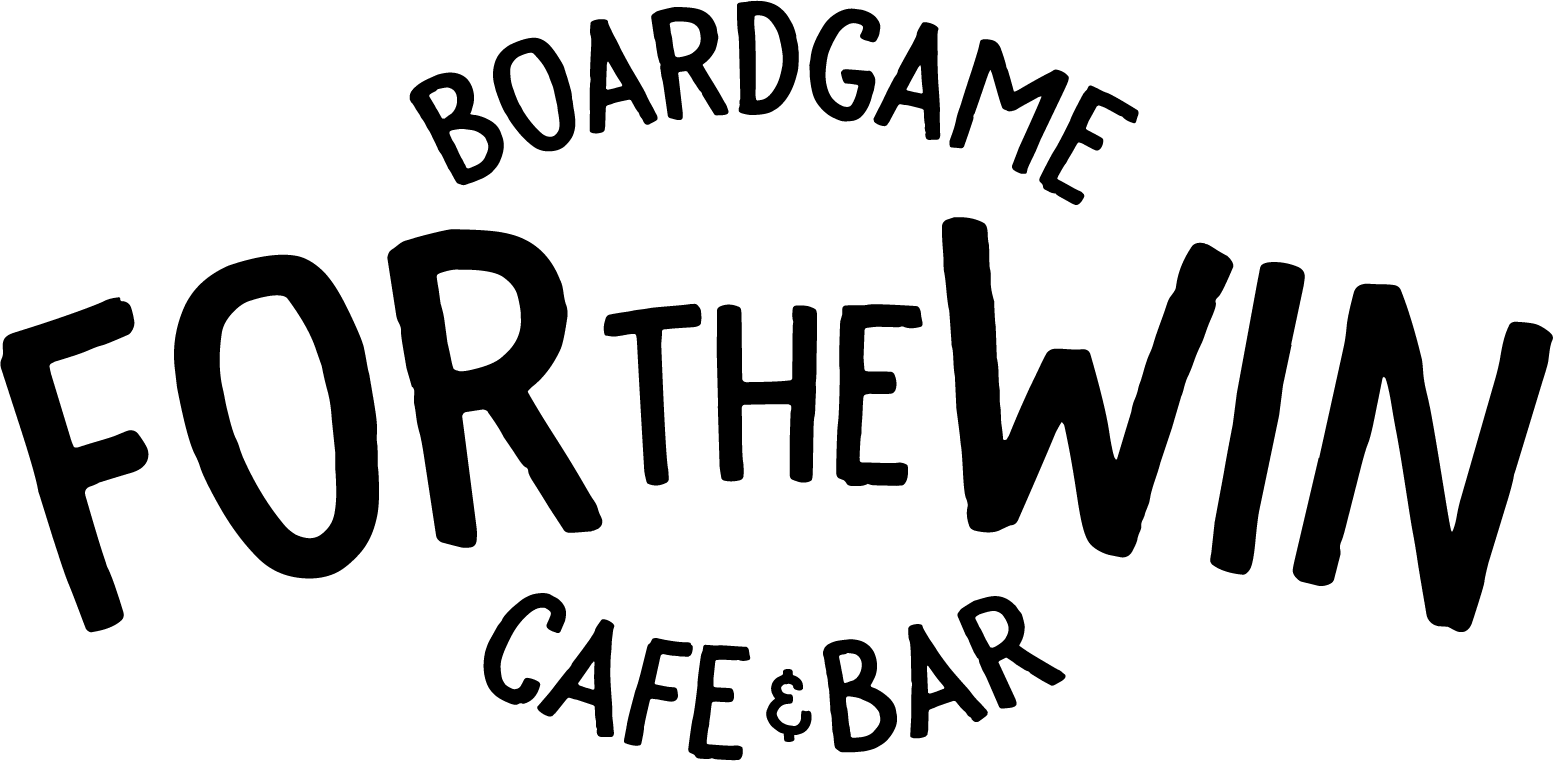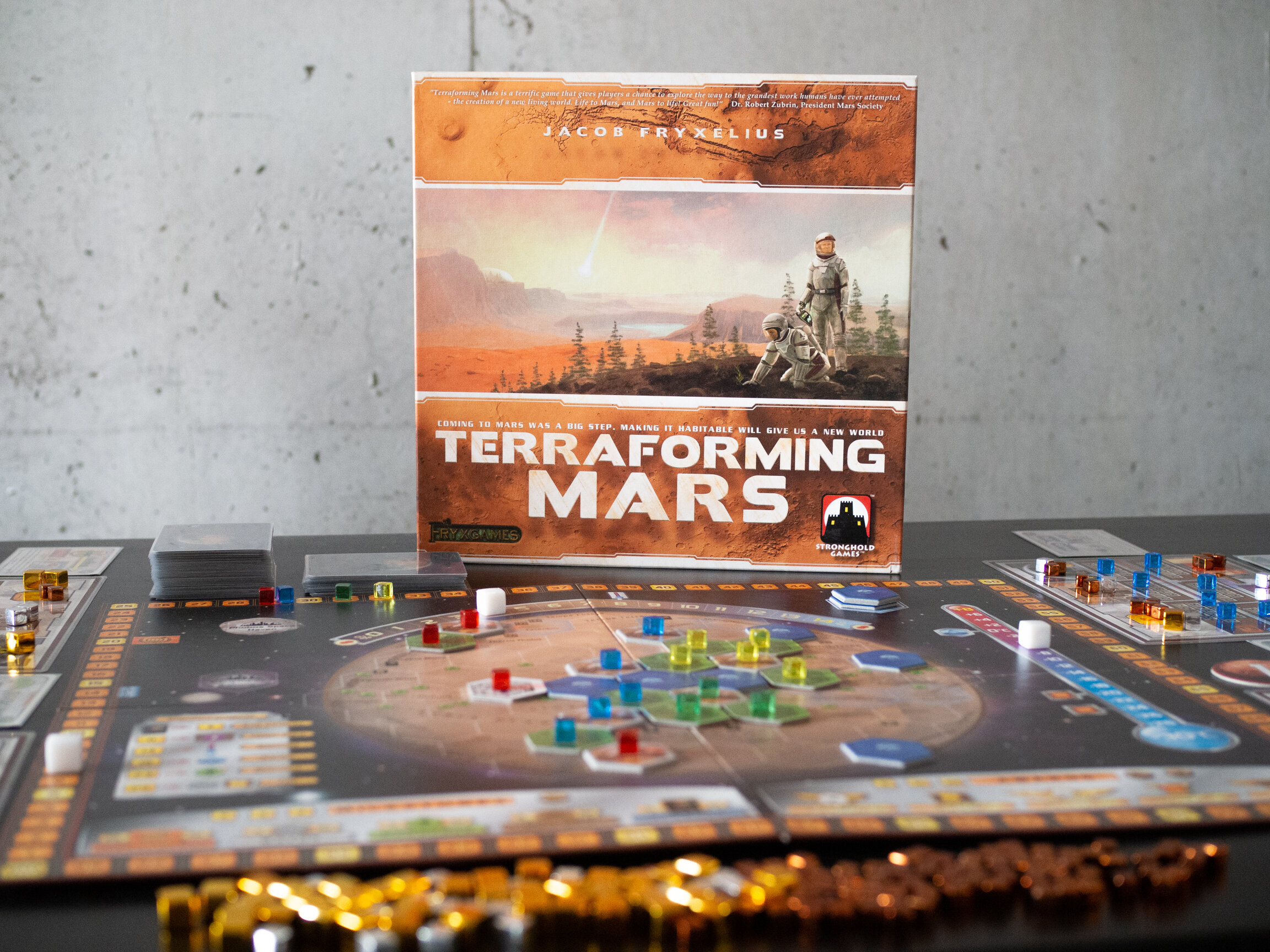Terraforming Mars
Beloved since its 2016 release, Terraforming Mars has become a popular title among tabletop enthusiasts. Taking place in the distant future of the 2400s, players take on the task of terraforming and establishing roots on mars. Corporations seek to invest heavily in the foundation of humanity’s foothold on the planet. Terraforming Mars is an expansive competition of resource management.
For as spectacular a game Terraforming Mars is to play, where it lacks the most is in the design department. Heavily filtered stock photos on card art will always be a lazy choice. The shiny copper, silver and gold cubes begin to chip away after a handful of plays. And the biggest offender to not only design but function, is the player mats. It’s routine for players to inadvertently knock a cube or two off their mat at some point and try to remember where it was tracking. If you’ve ever played Eclipse you know the exact pain. A lot of clunky design choices were made here, deducting points from what would otherwise be a near perfect game.
To begin each game, players select a Corporation card and draft Project cards to begin the game with. Players are provided a player mat which is meant to track their six primary resources throughout the game. Play proceeds clockwise as players take turns performing 1 to 2 actions. Once each player has passed, the round moves to Production phase where players replenish their resources. The game has three global parameters to determine that Mars is fully terraformed: oxygen, temperature and ocean. Once all three parameters have been met, the game concludes and the player with the most victory points is declared the winner.
The Project cards provide players with one-time benefits, multi-use benefits and end-game scoring benefits. In addition to the economic cost of the cards, some cards require certain terraforming conditions to be met. Players place city, forest and ocean tiles on the communal Mars board. There are also awards and milestones for accomplishing certain tasks which can be funded by the players. Before the action phase of each round, players also receive Project cards as part of the research phase which they can choose to purchase for later use.
There are many things to keep track in Terraforming Mars. With six different resources, three global parameters, five potential awards, five potential milestones, card management and tile placement, players are asked to juggle many things at once. And yet all these systems still feel well-harmonized and eventually second nature. I have always been a strong supporter of games that provide players with the ability to manipulate the ‘game end’ conditions. When implemented correctly, it can add balance to otherwise cascading runaway winners. While there are still elements of randomness to Terraforming Mars, I really appreciated the small things that provide player agency such as being able to fund awards instead of just having them randomly determined at the start of the game. All the little things really add up to provide an incredibly well-balanced and fundamentally sound game.
Terraforming Mars is not a beginner, or even intermediate, friendly game. It asks a lot of its players, but rewards them for investing the time to learn it. Other games which takes upward of 120 minutes, can often leave you feeling unfulfilled. I would strongly suggest purchasing a player mat overlay to remedy the heartache of losing tracking cube placements. Terraforming Mars is a phenomenal strategy game that changes from game-to-game, evolving as life inevitably will in the 2400s.




